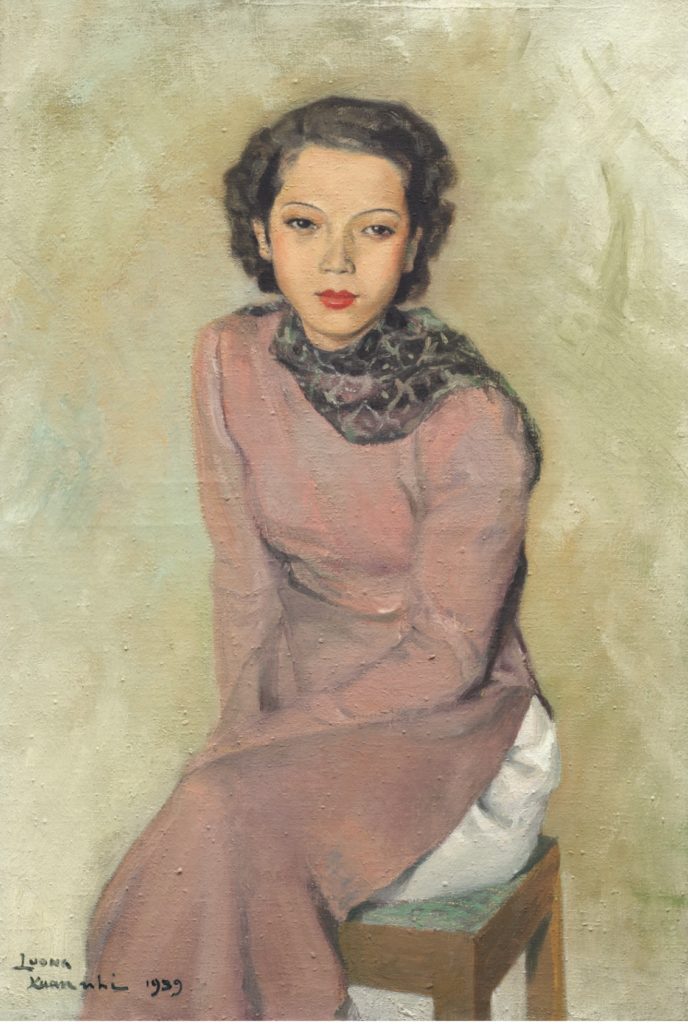Luong Xuan Nhi, « Portrait de dame », 1939, or the elegance of the combat
The 1930s-40s in Vietnam witnessed a resolute questioning of Confucianism and increased promotion of the country’s independence. Independence was evoked, claimed or demanded by all strata of Vietnamese society.
Clothing is a visible and not insignificant player in this dual emancipation. While the “modern” Vietnamese man has most often converted to Western-style dress, the “modern” Vietnamese woman, like the one in our painting, subscribes to the new dress code that Nguyen Cat Tuong – himself an alumnus of Hanoi’s École des Beaux-Arts, graduating in 1933 – promotes (aided in particular by Le Pho) by reinventing the original ao dai. This projected the traditional image of femininity, which is now outdated: the “honest” woman – beyond her ancestral courage – had to be wise, innocent, submissive (to her father, husband, uncle, brother…) and far removed from any manifestation of physical attractiveness, embodying unwavering fidelity to the old Vietnamese saying “Cái nết đánh chết cái đẹp” (virtue before beauty).

A stool, like the base of the sculptural woman. A beige cameo background that brings out the legitimate strength: this proud woman.
Nguyen Cat Tuong’s ao dai features a bodice that skims the contours of the body, then splits into two panels that spread at the hip and fall over the pants. This new garment crystallizes many of the ideals of the Tự Lực văn đoàn (Autonomous Literary Group).
Promoted, worn, assumed, mode rn ao dai offers women the chance to show off their beauty, exercise their sensuality and reshape the world in their own image.
It’s in this relaxed posture, this iconic garment embellished with a falsely casual scarf, this mutinous face and this garçonne hairstyle that many of the questions raised in Vietnam in 1939 are inscribed by Luong Xuan Nhi. Hard years followed, forcing them to make drastic choices.
But that’s another story.
Jean-François Hubert